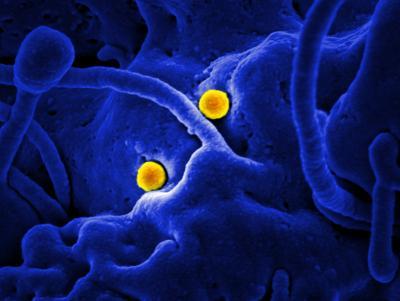Researchers at
the NIH National Institute of Allergy and Infectious Diseases scientists have found that Middle East respiratory syndrome coronavirus (MERS-CoV) infection in marmosets closely mimics the severe pneumonia experienced by people infected with MERS-CoV, giving researchers the best animal model yet for testing potential treatments.
They used marmosets after predicting in computer models that the animals could be infected with MERS-CoV based on the binding properties of the virus.
The same NIAID group in December 2012 developed the first animal model of MERS-CoV infection using rhesus macaques. That model has proven difficult to use for evaluating potential treatments because it mimics mild to moderate human disease, and the animals quickly recover from infection. Several research groups are working to develop mouse models of MERS-CoV infection, but they have yet to establish a severe disease model.

MERS-CoV particles (yellow) attach to camel tissue cells. Credit: NIAID
The MERS outbreak, which began in 2012, continues throughout the Middle East. Since the outbreak began, NIAID researchers have focused on understanding how the virus causes disease and how it can be treated effectively.
As of July 23rd, the World Health Organization has reported a total of 837 human cases of MERS-CoV infection, including at least 291 deaths.





Comments